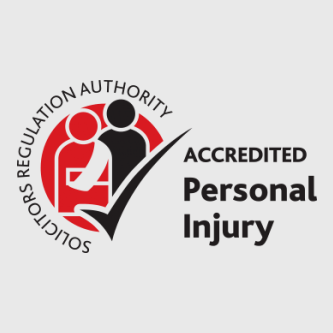Amputation is an unfortunate fact of life for thousands of people across the UK each year.
There is a wide range of reasons why a person may need to undergo a surgical amputation. Some people acquire infections or contract diseases, whilst others suffer from catastrophic injuries or experience medical negligence.
This section provides general information on the amputation process, but if you have any immediate emergency concerns about amputation, then please do not hesitate to consult a medical professional.
Amputation basics
There are two main types of amputation: traumatic and surgical.
The most common are lower-limb surgical amputations for elderly people with blood circulation problems.
Meanwhile, the majority of upper-limb amputation cases are the result of catastrophic injuries. In some cases, traumatic amputations – either partial or complete – can be reattached to the body. However, they are also known to cause a variety of complications in people, most notably circulatory shock and excessive bleeding, both of which can be fatal if not treated adequately.
Surgical amputations are performed as a last resort, primarily to save the patient’s life. If a limb can be reattached without it becoming a danger to the patient, the surgeon will do so.
Causes of amputation
There are four main causes by which a traumatic amputation can be classified:
Chemical – this is an amputation after a person comes into contact with corrosive chemicals
Electrical – an amputation after receiving a high voltage electric shock
Mechanical – this is an amputation caused by machinery
Thermal – an amputation after experiencing extreme levels of heat
The majority of traumatic amputations are mechanical, and are the result of injuries within the workplace. Other common causes include road traffic accidents, war and combat. When such traumatic injuries occur, surgery is required to treat the individual to save his or her life, and hopefully save their extremity. If the injury is not treated quickly and properly, there may be further complications through infection.
Unfortunately there are occasions when a traumatically injured limb cannot be saved, and most likely this is due to severe blood vessel damage and tissue death. In such circumstances, surgical amputation must occur.
Surgical amputation process
Before an amputation takes place, the medical team completes a full evaluation of the patient and in particular, the injured limb. Locating the exact site of the amputation is crucial because no damaged tissue should remain in the limb, whilst blood circulation must be able to continue after the procedure is completed.
Once the correct area of the limb has been incised, enough skin is left attached to cover the amputee’s stump. The surgeon will have in mind whether the amputee will require a prosthetic limb at a later date, so during the process will sculpt and mould muscle groups in order to fit prosthetics later on.
A surgeon will remove only as much of the injured limb as necessary, and will aim to preserve as much of the remaining ‘stump’ as possible. This is so that the amputee will retain the maximum amount of function in their limb.
Through a process called ‘microsurgery’, the surgeon protects the nerves so that they end before the stump. This is to minimise (or hopefully prevent) both stump and phantom limb pain. Through the same microscopic process, blood vessels are clamped to prevent blood-loss, and once the limb is removed, the vessels are stitched closed again.
Traumatic amputations are very rarely straight, clean and guillotine-like. For example, explosions can lodge shrapnel into the body and trauma causes bones to be crushed and bent out of shape. Therefore, via a process that is also known as ‘debridement’, a surgeon will remove any unwanted detritus, tissue and bone from the site of amputation.
The surgeon preserves as much of the amputee’s healthy skin, nerves and blood vessels as possible, whilst in the process removing any unwanted, damaged or infected elements. At this point, the amputation is nearing its completion and the surgeon has two options:
The first is to seal the wound with the limb skin i.e. a ‘closed amputation’. This method is chosen when there is high confidence that the injury is unlikely to become infected.
The second option is called an ‘open flap amputation’, where the surgeon leaves the limb’s flap of skin unsealed and the wound open. This can give the medical team a further few days to clean up the wound and remove any infected tissue. After any infection has been totally cleaned and flushed out, the skin is sealed and the stump is dressed.
Finally, the patient can begin recuperation and face up to their life as an amputee.
After amputation
In relatively straightforward amputation cases, the hospital recovery period will last for approximately two weeks. Of course, the length of time can vary, and depends on many factors such as how seriously injured the patient is, or the level of success of the operation.
Whilst the amputee is in hospital, there are regular checks undertaken by the medical team to monitor how well the amputation wound is coping with healing, and will supply any necessary painkilling medication and antibiotics should they be required.
The team will be on the lookout for any potential post-amputation complications that could further damage the stump. Such issues include:
- Skin flap necrosis (cell death)
- Heavy bruising
- Opening of the wounds
- Infection
- Muscle contracture and joint deformities
After enough time has elapsed, the medical team will recommend that rehabilitation begins. This is a multi-disciplinary process involving a wide-range of medical care and assistance, and in the acute phase can begin in hospital before continuing once the patient has been discharged.
Although they are not for everyone, many amputees will go on to use a prosthetic limb. Those that do will begin their preparation for life using this aid whilst still in hospital.









